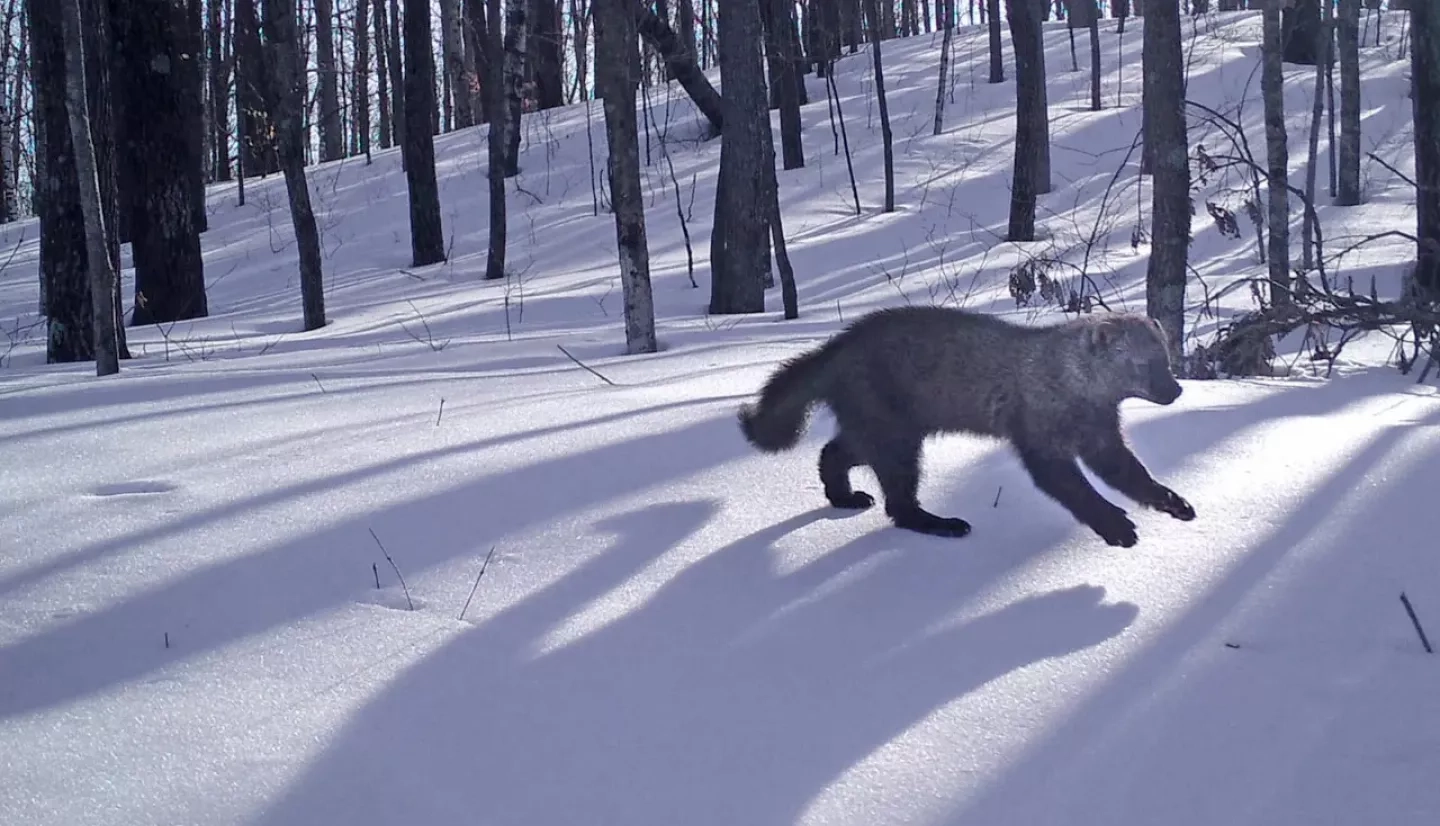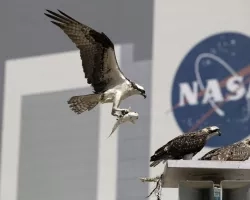Half of Wisconsin is covered in lush forests, which are home to a diverse array of wildlife. The Wisconsin Department of Natural Resources (DNR) monitors and manages this myriad fauna with cameras on the ground and in space, tapping into NASA satellite data as part of its statewide trail camera project, Snapshot Wisconsin.
The project’s goals are twofold: “The first is to provide a consistent and cost-effective method of monitoring all types of wildlife throughout the year … for the purpose of wildlife decision-making,” said Jennifer Stenglein, a wildlife scientist with the DNR. “The second is to involve citizens in the process of wildlife monitoring.”
For the Snapshot Wisconsin project, more than 1,700 volunteers set up and monitor nearly 2,100 trail cameras — more than double the amount from when the project started. The photos are uploaded to the Zooniverse database – an online platform where citizen scientists provide data used by wildlife managers and professional researchers. Once the photos are in this database, anyone around the globe can help count and classify the species caught on camera.
“What’s great about these sensors is that they collect data regularly, and over large, continuous spaces, which we can link to the trail camera data to figure out what’s happening at the camera locations and the spaces in-between cameras.”
–John Clare, UW-Madison’s Department of Forest and Wildlife Ecology
Since it began in 2016, Snapshot Wisconsin has captured more than 17 million photos, and Zooniverse users have categorized about 250,000 valuable images of Wisconsin wildlife. In this repository, you can find photos of everything from beavers and bobcats, to badgers and black bears.
Ultimately, the project team hopes to have about 5,000 cameras dotting the state; an average of about 70 cameras per county. However, snapshots alone can’t help the DNR understand the environmental factors that determine the distribution and abundance of the state’s wildlife.
As a partner of Snapshot Wisconsin, NASA brought its satellite fleet into the equation to provide that missing information. “NASA data are critical to making maps. Even though we have a lot of trail cams, those are still only a sample of the landscape,” stressed Principle Investigator Phil Townsend of the University of Wisconsin (UW)-Madison. “We know that what we measure from NASA imagery — such as snow cover, forest cover and fragmentation — explains where animals are at different times of the year, as well as their behavior.”
“What’s great about these sensors is that they collect data regularly, and over large, continuous spaces, which we can link to the trail camera data to figure out what’s happening at the camera locations and the spaces in-between cameras,” said John Clare, project team member with UW-Madison’s Department of Forest and Wildlife Ecology.
Clare used Wisconsin’s snowshoe hare as an example of the kind of guidance the team might give wildlife managers. “[The] snowshoe hare seems to be declining due to snow loss,” he noted. “We might find that hare persistence is associated with brushy, young forest, and we might suggest implementing forestry practices to promote this habitat to keep the species around.”
Looking for even more ways to use that wider perspective for small-scale applications, the Snapshot Wisconsin team is bringing NASA satellite data down for forecasting wildlife scenarios at the county-level.
“[Currently,] the white-tailed deer population in Wisconsin is estimated using a formula to get a pre-hunt and post-hunt population size,” Stenglein explained. With the added NASA environmental data, the team could build predictive models for better population estimates for its Deer Management Units – roughly equivalent to each of Wisconsin’s 72 counties. “Having accurate deer population estimates for each Deer Management Unit is foundational for the decision-making cycle of quota setting and determining the annual hunting season structure.”
With this fleet of NASA satellites and sensors now supporting the DNR’s wildlife management, Clare reiterated, “The remote-sensing data has really improved our understanding of the distribution of certain species that might be difficult to study over large extents, and we've been able to identify certain environmental correlates that haven't been previously well-established.”
This story is part of our Space for U.S. collection. To learn how NASA data are being used in your state, please visit nasa.gov/spaceforus.





